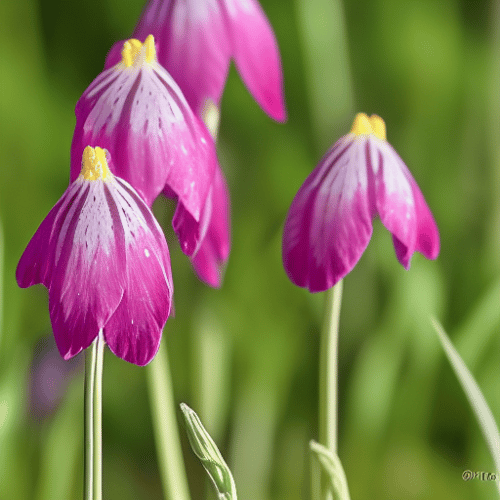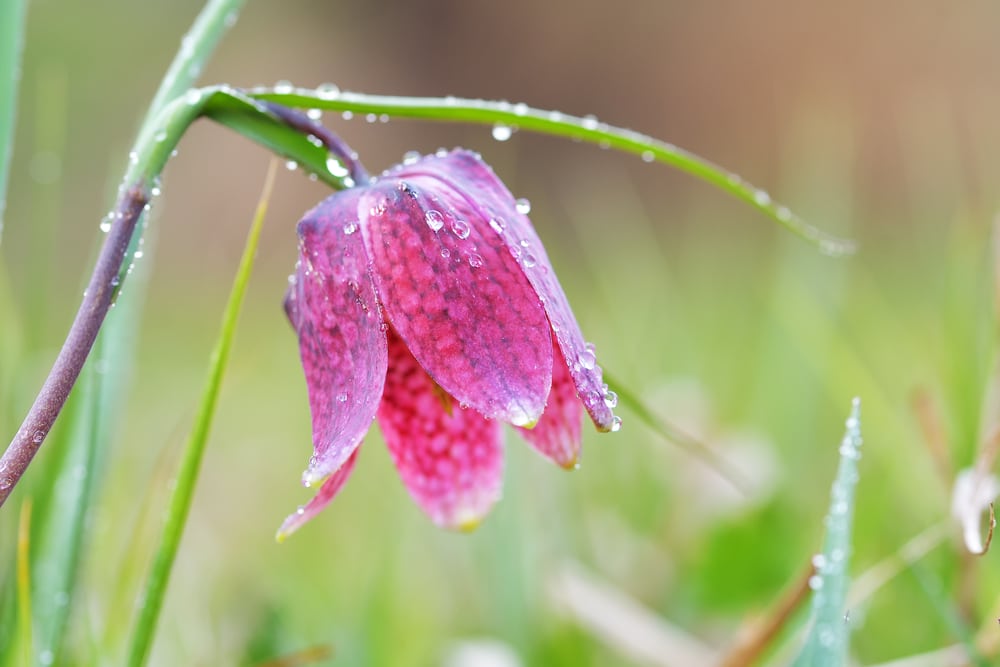Last Updated on
Fritillaria meleagris, more commonly known by the name snake’s head fritillary, is part of the lily family. This flowering plant has an exotic appearance with beautiful spotted flowers. The other common names for Fritillaria meleagris often reference the plant’s appearance in some way. Regardless of what name you call these plants, they have often been associated with May Day celebrations and also with death and disease.
Overview
- Scientific Name: Fritallaria meleagris
- Common Name/s: leper lily, Lazarus bell, drooping lily, chequered daffodil, chequered lily, frog cup, guinea flower, guinea-hen flower, chess flower
- Family: Lily
- Origin: native
- Habitat: meadows, grasslands, flood plains
- Flowering months: March to May
Snake’s Head Fritillary Distinguishing Features
Fritillaria meleagris is easy to grow in your garden, either from seeds or bulbs. Adding this species to your home garden will result in a large number of beautiful flowers come April, in the Spring. Snake’s head fritillary is also a perennial plant that comes back year after year. These plants often grow in large groups in meadows and other natural habitats.
Stems and Leaves
The stems on a fritillary grow to be between 15 and 40cm tall per plant. They have long tendril or blade-like leaves that can stand up or appear wispy like long blades of grass. Once the flowers start to grow heavy, the stems start nodding under the weight and eventually droop on the top, so the flowers are hanging down and nodding toward the ground. When you see this, it becomes apparent why they are referred to as a snake’s head.
Flowers

The snake’s head flower usually has a reddish-purple colour with a purple chequered pattern but can also be solid white. Often, the purple and white flowers will grow together in meadows or even from the same batch of bulbs. The flowers themselves are bell or bulb-shaped.
The flowers bloom in early to mid-Spring, generally during the months of March, April, and May.
Where Does Snake’s Head Fritillary Grow?
Fritillaria meleagris is native to European and Western Asian flood river plains where they used to grow in the wild in great numbers. However, in most places, it is now considered to be an endangered species, so it is most commonly found growing in gardens.
There is an unsettled debate surrounding snake’s head fritillaries and whether they are considered native to England specifically or are established garden plants that escaped into a meadow on their own.
Snake’s head fritillary prefers to grow in grasslands, hay, meadows, or damp soil as long as it is below 800 metres in elevation.
Fritillaria meleagris also prefers predominantly shady areas where they can get partial light in the early morning or late afternoon. This helps maintain a cooler, damper climate for the root system and keeps the soil moist for longer, which they need in order to do well, thrive, and bloom.
Is Fritillaria Poisonous?
A button-shaped bulb inside the Fritillaria meleagris contains alkaloids that are poisonous. These toxins include Imperialine and Tulipalin A, which can disrupt heart and kidney functioning as well as cause an allergic reaction when it makes contact with the skin.
Interestingly, both types of poisonous alkaloids have been used to help with developing new pharmaceuticals.
The poisonous characteristic of a fritillary also makes them resistant to deer and other pesky wildlife that want to eat your flowers.
Do Fritillaries Self-Seed?
As a member of the lily family, snake’s head fritillary plants do, in fact, self-seed. The plants release their seeds, and then they randomly sow themselves wherever they happen to land on the ground.
This not only explains how they could have escaped a garden a long time ago but also sheds some light on how these plants managed to be native to such an expansive area.
Tell us what you think about this unusually patterned lily. Would you like to have it in your garden? Comment below.
Emily is a woman of many talents. She has a B.A. in English and enjoys writing. Emily loves accessorising her home with quality products that not only serve a purpose but also enhance the overall convenience and tranquillity of her living space; there’s nothing like coming home to your own personal sanctuary after a long day! She loves anything that can make life easier or more comfortable—from dishware to furniture to lighting fixtures.



